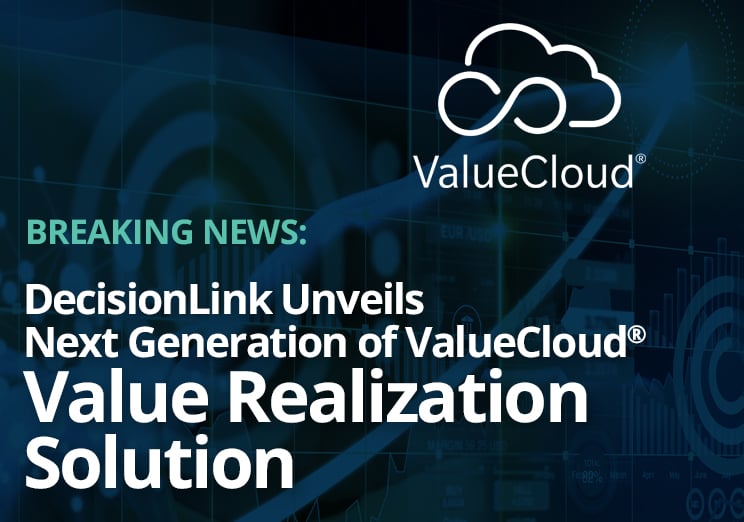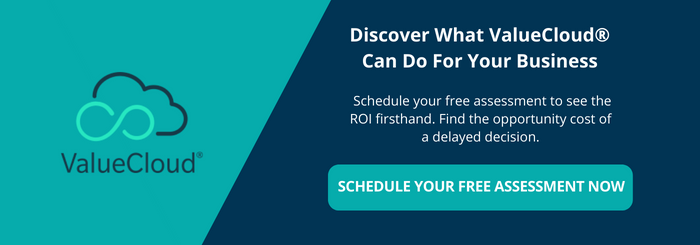The ‘Hard’ versus ‘Soft’ Benefit Conversation – part one of two

by Bob Caravella
Bob Caravella is one of the industry’s leading experts on value engineering. He built and led the business value engineering and consulting practices at Mercury Interactive and HP Software – including value model engineering and enabling the worldwide sales teams to carry on meaningful value conversations with customers. He is a member of the DecisionLink Management Advisory Board.
The following is the first part of a blog series that explains an important aspect of Customer Value Management (CVM) and value selling — the justification of investment in B2B solutions using ‘hard’ vs. ‘soft’ benefits.
When 30 professionals recently weighed in on the issue of using ‘hard’ versus ‘soft’ benefits to justify investing in B2B solutions, the responses (perhaps not surprisingly) were uniformly consistent: ‘it’s in the eye of the beholder (aka, the Economic Buyer).’ Nevertheless, because the professionals represented a diverse group of individuals across different roles (buyer, seller, delivery) and different business functions (IT, Supply Chain, Value Engineering), their perspectives and responses are worth noting.
One person, commenting on the importance of the hard versus soft debate noted, ‘it’s a great question that strikes at the heart of credible value messaging, and the reason why c-level buyers don’t take claims of 600% ROI with 3-month payback seriously.’ Here’s a summary of the exchange and some food for thought.
First, let’s try and define hard versus soft
- Hard Benefits, sometimes referred to as ‘Direct’ or ‘Tangible’ benefits, are the line items that directly impact P&L. They are typically found as line items in budgets or project plans. Hence, they are ‘measurable’ and someone can be held accountable for performance. Examples include FTE (Full Time Equivalent) labor costs, annual contract service expenses, hardware or software expenses. The mantra for this type of benefit is ‘Doing more with less.’
- Soft Benefits, often referred to as ‘Indirect’ or ‘Qualitative’ benefits, are line items that do not show up in budgets. Typically, they are risks that would be mitigated to a degree by making an investment in a B2B solution. For example, mitigating the risk of end user productivity or revenue loss, customer disloyalty, or regulatory non-compliance penalties. The tagline for this type of benefit is ‘Doing more with the same.’ The point being that existing people can be reallocated to more strategic work, perhaps increasing revenue or improving the customer experience. These are harder to measure.
Become Your Customer’s Trusted Advisor
Never assume you know what the customer means by ‘hard’ versus ‘soft.’ Establishing a Trusted Advisor relationship with your customer requires clarification on what Benefits are ‘hard’ versus ‘soft.’ That way a meaningful measurement baseline can be established. Here are some lessons learned to consider.
- Focus on the buyer’s desire to change
- Don’t get caught up in philosophical debates about hard versus soft costs. Rather, understand the nature of the change the buyer is committed to making.
- If a customer is going to realize the benefits, they need to make changes. Help your buyer think through the changes needed then focus on the best way to quantify the potential benefits realized from those changes.
- Reframe the conversation
- Challenge the status quo and push for alternative ways to move the needle. Productivity measurement can be applied to any form of capital or human resource and knowing how productivity efficiencies align with competitive advantage and bottom line results should be where the conversation starts.
- Gain insight into the buyer business transformation strategy and drivers
- Understanding the customer’s strategy and expected outcomes will dictate how you position benefits. In some cases, you may need to shift the conversation from cost savings to revenue growth. A high revenue growth company views benefits differently than a mature, slow growth business with a need for cost savings.
- Positioning benefits depends on the growth curve of the buyer: a fast-growing company can avoid adding headcount in the future, or reducing workload so that people can work on more strategic activities with a bottom-line impact. Gain insight into the drivers of growth (e.g., case call volume) over the coming years. Ask if they plan to hire to cover this growth and if hiring can be avoided, would that be tied to hard savings.
- If you know that the customer isn’t looking to reduce FTEs, but is looking to expand to a new market, align the FTE benefits to this strategic initiative and refactor the benefits around revenue growth. You may say something like, “By streamlining and automating this process, we can add five FTEs to the market expansion project, reducing the time to market by two days resulting in $xxx of additional revenue.”
- Are mergers and acquisitions part of the strategy? If so, a productivity argument can be made such as, ‘you can assimilate the acquisition without the need to hire more people, resulting in a tangible and measurable cost avoidance.’
- Go with the flow
- Ultimately, the buyer decides what’s ‘hard’ versus ‘soft’, not you. Never draw attention to the type of benefit that is being measured. Wait for a buyer to request a breakdown, don’t volunteer it. Once the decision is made, always lead with hard benefits. While soft benefits can be quantified, they should come along for the ride.
- A “soft” benefit that can be tied to an opportunity cost, like deferred hiring, customer retention, or a faster product launch, becomes significantly more tangible; thus, it can be treated as ‘hard’. This often removes a buyer’s hesitancy to include it in the business case.
- Productivity savings are more compelling for some roles than others. CEOs, other executives, and people in the supply chain (like strategic planners, material planners and designers) typically prefer hard benefits. Support functions, general employees, agents are usually more receptive to soft benefits.
- Soft benefits may be treated as ‘Other (Qualitative) Considerations’ in your business case. Keep in mind that soft benefits may play a larger role with quality or process-oriented customers. Some companies discount relevant soft benefits to 10-25% of the value of a hard benefit.
In part two we’ll explore how to reposition the nature of a benefit, dealing with push back, bridging the expectation gap, and how to ensure you’re asking the right questions.

 ValueCloud
ValueCloud
.png?width=118&height=76&name=Rectangle%20(3).png) ValueCloud Ignite
ValueCloud Ignite
.png?width=92&height=92&name=Rectangle%20(4).png) Free Assessment
Free Assessment
.png?width=100&height=100&name=Rectangle%20(5).png) Watch a Demo
Watch a Demo
.png?width=82&height=96&name=Rectangle%20(6).png) Value Calculator
Value Calculator

.png?width=62&height=51&name=Group%2010%20(1).png) Marketing
Marketing
 Sales
Sales
 Customer Success
Customer Success
 Engage Prospects
Engage Prospects
 Win Deals Faster
Win Deals Faster
 Retain Customers
Retain Customers
.png?width=62&height=62&name=Rectangle%20(8).png) Adopt and Scale
Adopt and Scale
.png?width=54&height=54&name=Rectangle%20(9).png) Cybersecurity
Cybersecurity
 Healthcare
Healthcare
.png?width=54&height=54&name=Rectangle%20(10).png) IT & Software
IT & Software




